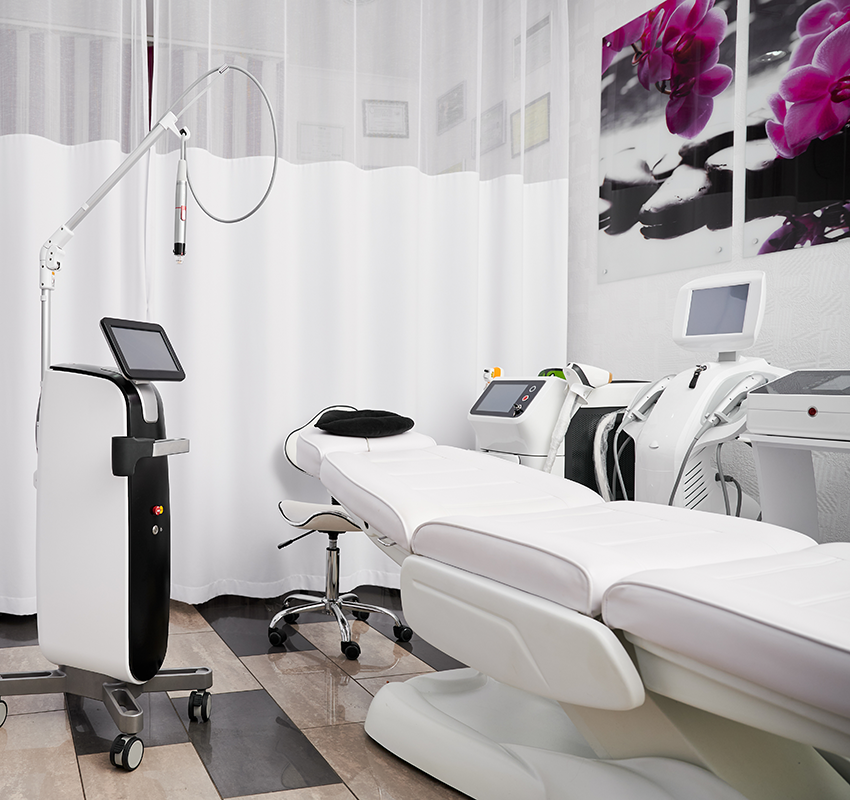Best Marketing Strategies for Medical Practices
Marketing plays a crucial role in helping medical practices grow, attract new patients, and maintain strong relationships with existing ones. In this article, we’ll explore effective strategies such as building a robust online presence, leveraging patient testimonials, and utilizing content marketing. These approaches will not only enhance your practice’s visibility but also ensure it remains competitive in today’s evolving healthcare landscape.
Key Takeaways
- Healthcare marketing is essential for sustaining and growing practices, focusing on patient retention and communication.
- Building a strong online presence through a professional website, local SEO, and social media engagement is crucial for attracting new patients.
- Leveraging patient testimonials and reviews, along with effective content marketing, can significantly enhance credibility and patient trust.
The Importance of Healthcare Practice Marketing
Marketing is essential for healthcare practices to attract new patients, build trust, and maintain strong relationships. Beyond patient acquisition, it plays a crucial role in fostering growth and ensuring a strong presence in the competitive medical landscape. Effective marketing strategies not only help expand patient outreach but also strengthen practitioner-patient relationships, leading to higher retention rates.
A well-rounded marketing approach allows healthcare providers to stay responsive to changing patient needs by offering relevant solutions. With digital platforms becoming the primary resource for finding medical services, a strong online presence is indispensable. Data-driven marketing strategies help practices reach the right audience, optimize engagement, and improve service delivery.
Build a Strong Online Presence
In today’s digital age, a strong online presence is critical for healthcare marketing. Studies show that 95% of internet users rely on patient reviews when choosing a healthcare provider, highlighting the need for an optimized digital footprint. A well-designed website, local SEO, and active social media engagement are key strategies to enhance visibility and attract new patients.
A professional, user-friendly website serves as a healthcare practice’s digital front door. Coupled with search engine optimization (SEO) and consistent social media activity, these elements help increase website traffic, improve patient engagement, and boost retention. Prioritizing these aspects ensures that healthcare providers stand out in a competitive industry.
Create a Professional Website
A toptier website acts as the virtual entry point for healthcare practices, playing a pivotal role in elevating patient experience. Such a professional site must be easy to use, visually engaging, and fine-tuned for search engines to draw in and maintain a patient base. Incorporating features like easy navigation, compatibility with mobile devices, and facilities for online booking of appointments can significantly boost user experience and aid in keeping patients engaged.
Building trust is paramount. Including staff biographies that highlight professional qualifications and expertise fosters patient confidence, while prominently displayed patient testimonials reinforce credibility. Additionally, essential details such as available services, practice locations, and contact information should be presented to ensure accessibility. These elements contribute to a professional online presence that enhances patient trust and encourages appointment bookings.
Enhancing Visibility through Local SEO for Healthcare Practices
Local SEO is essential for healthcare practices aiming to appear prominently in local search results, which helps attract potential patients from nearby areas. Focusing on local rather than national rankings enables these facilities to reach their target demographic. Key strategies to enhance local SEO include claiming your online business listings and developing specific landing pages for each practice location.
The impact of patient reviews on local SEO is profound. Ranking as one of the top three factors, reviews significantly influence both search engine visibility and the establishment of trust with prospective patients. Optimizing web pages for key treatments and producing well-structured, informative content also boosts rankings in local search results. Achieving a strong organic search presence can reduce or even eliminate the need for paid advertising, leading to cost savings and increased organic visibility.
Although the focus may be on organic growth, supplementary strategies like pay-per-click (PPC) advertising should not be overlooked. These campaigns, when expertly designed with geographically relevant targeting and precise keywords, can significantly enhance the effectiveness of local advertising efforts. This, in turn, drives more potential patients to your practice, enhancing overall visibility and patient acquisition.
Engage on Social Media Platforms
Social media platforms are invaluable tools for healthcare marketing, enabling practices to connect with their community, share health-related information, and showcase their services. By engaging with patients, healthcare providers can build trust, foster a sense of community, and strengthen patient loyalty.
To effectively capture potential patients’ attention, it’s advisable to share varied content such as educational blog posts, wellness tips, patient success stories, and practice updates. Consistency is key, and utilizing a content calendar can help organize and streamline proactive marketing efforts. Partnering with local influencers can also extend your reach and introduce your healthcare services to a broader audience.
Social media platforms also offer advanced advertising tools that enable the precise targeting of specific demographic groups. Platforms like Facebook, Instagram, and LinkedIn are particularly effective for medical clinic marketing as they help clinics create tailored ads, increase digital visibility, and drive patient engagement.
Leverage Patient Testimonials and Reviews
Patient testimonials and online reviews are crucial for building credibility and attracting new patients. Many individuals rely on ratings and patient feedback when choosing a healthcare provider. Highlighting positive testimonials on a practice’s website and social media can enhance trust and improve conversion rates.
Encouraging satisfied patients to share their experiences adds authenticity and reinforces the quality of care provided. Additionally, responding to both positive and negative feedback demonstrates a commitment to patient satisfaction and continuous improvement.
By actively managing reviews, healthcare practices not only build trust but also strengthen their reputation, making them more appealing to prospective patients.
Request Reviews from Satisfied Patients
Requesting patient reviews is essential for enhancing a practice’s reputation. Many patients report that they have never been asked to leave a review, despite its importance in building trust. To encourage feedback, practices should ask for reviews immediately after service and make the process as simple as possible. Engaging with patient compliments is also an opportunity to request reviews, as satisfied patients are more likely to share positive experiences.
Providing direct links to review platforms through social media and email follow-ups can further simplify the process. Responding to reviews, whether positive or negative, conveys appreciation for patient input and demonstrates a commitment to service quality. Implementing automated reminders can ensure a steady flow of patient testimonials without making patients feel pressured. This approach helps boost a healthcare practice’s online presence while gathering valuable insights for continuous improvement.
Utilize Video Testimonials
In healthcare marketing, video testimonials are a powerful tool as they showcase real patient experiences. These genuine stories are highly effective in building trust and credibility because potential patients see them as believable and reliable. Distributing these testimonials across multiple channels, such as the practice’s website, social media, or even integrating them into email marketing campaigns can significantly enhance engagement and increase conversion rates.
Incorporating video testimonials into their marketing strategies allows healthcare practices to highlight their professional expertise, empathetic care, and successful treatment outcomes. These elements provide compelling reasons for potential patients to choose their services. The visual impact of video testimonials not only captures attention but also leaves a lasting impression on viewers, making them an essential element of any effective healthcare marketing strategy.
Implement Effective Content Marketing
Content marketing is an essential strategy for establishing thought leadership and attracting patients. Providing educational and relevant content not only informs patients but also positions a healthcare practice as a trusted expert.
Publishing informative content helps healthcare providers engage with patients while addressing common health concerns. Articles, social media updates, and online workshops serve as valuable resources for individuals seeking medical guidance. A well-planned content marketing strategy not only draws new patients but also enhances the overall experience by offering accessible and reliable health information.
Develop Valuable Blog Content
Creating high-quality blog content allows healthcare practices to engage with patients while strengthening their authority in the medical field. Blog topics should cover health and wellness tips, common medical concerns, treatment options, and advancements in medical research.
A well-maintained blog and frequently updated FAQ section not only educate patients but also improve search engine visibility, making the practice easier to find online. By consistently publishing relevant content, healthcare providers can attract new patients while fostering loyalty among existing ones.
Positioning a website as a trusted health resource strengthens its online presence and encourages ongoing patient engagement. A strategic blogging approach enhances visibility, fosters community trust, and helps healthcare providers stand out in a competitive digital landscape.
Repurpose Content Across Multiple Channels
Transforming a single content piece into multiple formats is an effective strategy to amplify marketing impact and broaden engagement. Healthcare practices can enhance audience interaction and extend their reach by adapting, for example, an infographic into an in-depth blog article, a video production, and several social media updates tailored to their target audience.
Employing this tactic not only conserves time and resources but also ensures the widespread dissemination of high-quality material across various platforms. By repurposing existing content for different digital channels, healthcare practices can effectively connect with their target audience, maximizing the impact of their marketing strategies.
Invest in Paid Advertising
Paid advertising is a powerful tool for healthcare practices to enhance visibility and attract new patients. By utilizing targeted ads, clinics can connect with individuals actively searching for medical services, ensuring that marketing efforts reach the most relevant audience.
Social media platforms and other digital advertising channels allow healthcare providers to refine their targeting based on demographics, interests, and behaviors. Well-crafted ads not only increase awareness but also drive traffic to the practice’s website, ultimately converting potential patients into loyal ones.
A strategic approach to paid advertising maximizes return on investment by focusing on high-intent audiences. By continuously analyzing ad performance and adjusting campaigns accordingly, healthcare practices can optimize their reach and effectiveness, strengthening their presence in an increasingly digital healthcare landscape.
Explore Programmatic Advertising
Programmatic advertising simplifies the ad-buying process, allowing healthcare practices to reach potential patients with precision. By leveraging data-driven targeting, healthcare providers can ensure their ads appear in front of the right audience at the right time.
One effective strategy is geofencing, which creates virtual boundaries around specific locations where potential patients are likely to be. When individuals enter these areas, they receive targeted ads, increasing the chances of engagement and appointment bookings.
This data-driven approach enables healthcare practices to connect with individuals actively seeking medical services, leading to higher conversion rates. By incorporating programmatic advertising into their marketing strategy, healthcare providers can optimize outreach, improve patient acquisition, and enhance their digital presence.
Enhance Patient Engagement
It is essential to improve patient engagement to establish trust and create enduring connections. Regular updates and prompt replies on social media platforms are effective for fostering both trust and engagement with patients. The use of video testimonials can bolster patient involvement and confidence within healthcare marketing.
Practices have the opportunity to cultivate trust and develop lasting relationships with their patients by actively engaging them through content marketing strategies. Participation in local community events coupled with conducting educational sessions serves to strengthen that trust while promoting engagement among patients.
Implement Patient Portals
Patient portals are essential instruments that bolster the interaction between patients and healthcare providers. Given that 91% of patients anticipate a response through their patient portal within a day, prompt communication plays a vital role in achieving patient contentment. The gathering and scrutiny of feedback from those receiving care can greatly boost the potency of healthcare industry marketing tactics.
The adoption of patient portals by healthcare practices is instrumental in elevating patient involvement and their collective experience with the service provided. These platforms offer an avenue for individuals to review personal health data, liaise with healthcare professionals, and obtain updates swiftly, fostering an environment where they perceive themselves to be engaged and attentively looked after.
Use Email Marketing for Consistent Communication
Email marketing is used in healthcare marketing ideas for staying connected with patients, sharing valuable content, and promoting offers. By providing timely updates through email, patients feel more connected to their healthcare provider. Types of content to share in emails include health tips, practice updates, and exclusive offers to keep patients informed and engaged.
Building an email list can be achieved through the website, during visits, or by offering downloadable resources. Segmenting the email list is important to send targeted emails that resonate with the recipients, ensuring that the marketing efforts are effective and appreciated by patients.
Track and Measure Marketing Efforts
Monitoring and analyzing marketing performance is essential for refining strategies and achieving optimal results. Regularly tracking key metrics such as website traffic and conversion rates helps healthcare practices make data-driven decisions.
Using digital tools provides clear insights into campaign effectiveness, enabling adjustments for better outcomes. Setting clear, measurable goals ensures that progress is easily tracked and evaluated. Consistently reviewing and refining marketing strategies ensures continuous improvement and maximizes success.
Analyze Patient Feedback
Evaluating patient feedback is essential for identifying effective marketing strategies and areas for improvement. Leveraging technology to collect and manage reviews streamlines the process and enhances the effectiveness of gathering patient testimonials. Additionally, analyzing service usage data or financial trends can help identify popular treatments and patient preferences.
Healthcare practices can significantly enhance their marketing efforts by aligning them with patient insights. This ongoing feedback loop strengthens patient relationships and ensures that services evolve to meet their needs. Additionally, healthcare providers must adhere to Health Insurance Portability and Accountability Act (HIPAA) privacy requirements, ensuring that patient data is handled securely while improving communication and satisfaction rates.
Monitor Key Metrics
Tracking key performance indicators (KPIs) is essential for evaluating the effectiveness of healthcare marketing strategies. Regularly analyzing these metrics allows healthcare practices to make data-driven adjustments that enhance their approach. Patient feedback plays a crucial role in this process, offering valuable insights into patient experiences and engagement levels.
By leveraging these insights, healthcare practices can refine their marketing efforts to better align with patient needs and expectations. This ongoing cycle of evaluation and optimization ensures that marketing initiatives remain effective and continue to support the practice’s overall objectives.
Build Community Relationships
Fostering ties within the community is vital for drawing in new patients and bolstering a medical practice’s standing. In the healthcare sector, networking holds great importance because referrals are often key to gaining new patients. Genuine engagement with residents leaves enduring memories and aids in promoting the healthcare practice.
Crafting detailed blog posts allows a medical practice to be seen as an authoritative source of patient education, which boosts its reputation and trustworthiness. When healthcare practices engage proactively with their community, they establish confidence and devotion among their clientele, which favorably influences patient retention rates.
Participate in Community Events
Healthcare practices can form immediate relationships with prospective patients by being involved in local community events. Local fairs and gatherings offer healthcare professionals an opportunity to enhance their visibility and establish trust within the community. Health fair involvement allows these professionals to meet potential patients, thereby boosting their profile in the locality.
Through active engagement at such community functions, healthcare practices have the chance to cultivate a favorable reputation and earn the confidence of area residents. These interactions may result in a rise in patient referrals and solidify the practice’s standing within the neighborhood.
Offer Educational Workshops
Hosting educational workshops serves as an effective approach for healthcare practices to connect with potential patients and exhibit their dedication to community wellness. Through webinars and online sessions, these practices can reach a broader audience while also highlighting their professional knowledge. This tactic is instrumental in demonstrating the practice’s commitment to health education within the community.
Healthcare practices that provide such educational programs bolster their standing in the local area and establish themselves as reliable providers of health information. These initiatives often result in increased patient involvement and greater satisfaction among attendees.
Summary
Effective healthcare marketing is essential for attracting new patients, retaining existing ones, and improving overall care standards. Key strategies include building a strong digital presence, leveraging patient testimonials, utilizing content marketing, investing in targeted advertising, enhancing patient engagement, monitoring campaign performance, and fostering local community connections. Focusing on these elements, healthcare providers can develop a well-rounded marketing approach that ensures long-term success.
Beyond promotion, healthcare marketing is about building trust, maintaining patient relationships, and aligning with their’ needs. Implementing the strategies outlined in this guide helps medical practices stay competitive and adapt to industry changes. Success in healthcare marketing requires continuous improvement and flexibility to meet evolving patient expectations and market trends.









